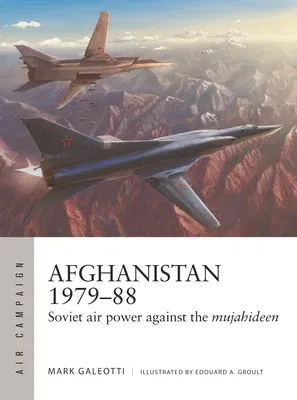The first English-language book to examine the crucial part air power
played in the Soviet-Afghan War.
The Soviet Union's invasion of Afghanistan was fought as much in the air
as on the ground. From the high-level bombing raids that blasted
rebel-held mountain valleys, to the Mi-24 helicopter gunships and Su-25
jets that accompanied every substantial army operation, Soviet control
of the air was a crucial battlefield asset. Vital to every aspect of its
operations, Mi-8 helicopters ferried supplies to remote mountain-top
observation points and took the bodies of fallen soldiers on their last
journey home in An12 'Black Tulips'.
But this was not a wholly one-sided conflict. Even before the Afghan
rebels began to acquire man-portable surface-to-air missiles such as the
controversial US 'Stinger, ' they aggressively and imaginatively
adapted. They learnt new techniques of camouflage and deception, set up
ambushes against low-level attacks, and even launched daring raids on
airbases to destroy aircraft on the ground.
Featuring information previously unknown in the West, such as the
Soviets' combat-testing of Yak-38 'Forger' naval jump jets,
Soviet-expert Mark Galeotti examines the rebel, Kabul government and the
Soviet operation in Afghanistan, drawing deeply on Western and Russian
sources, and including after-action analyses from the Soviet military.
Using maps, battlescenes and detailed 'Bird's Eye Views', he paints a
comprehensive picture of the air war and describes how, arguably, it was
Soviet air power that made the difference between defeat for Moscow and
the subsequent stalemate that they decided to disengage from.

